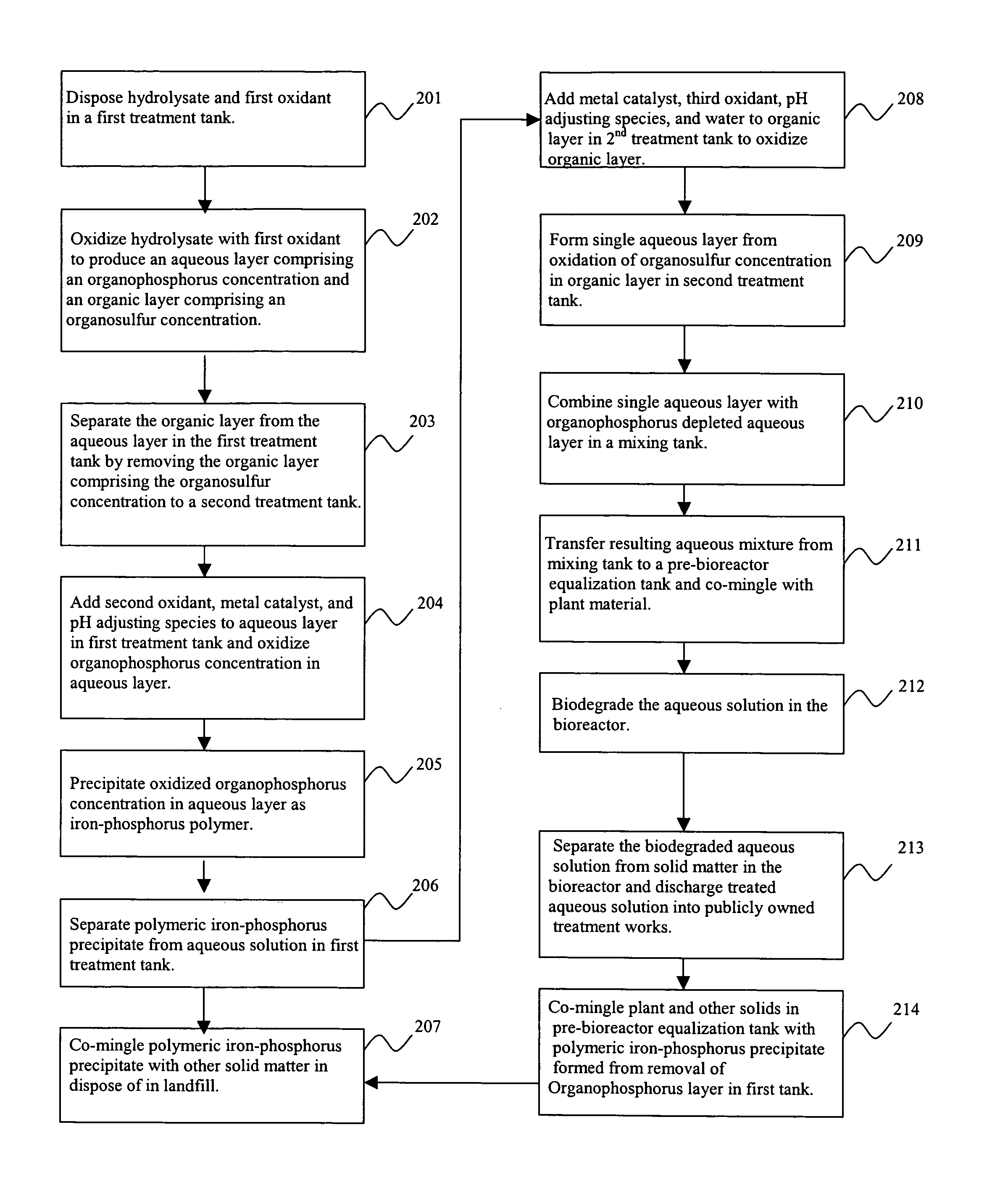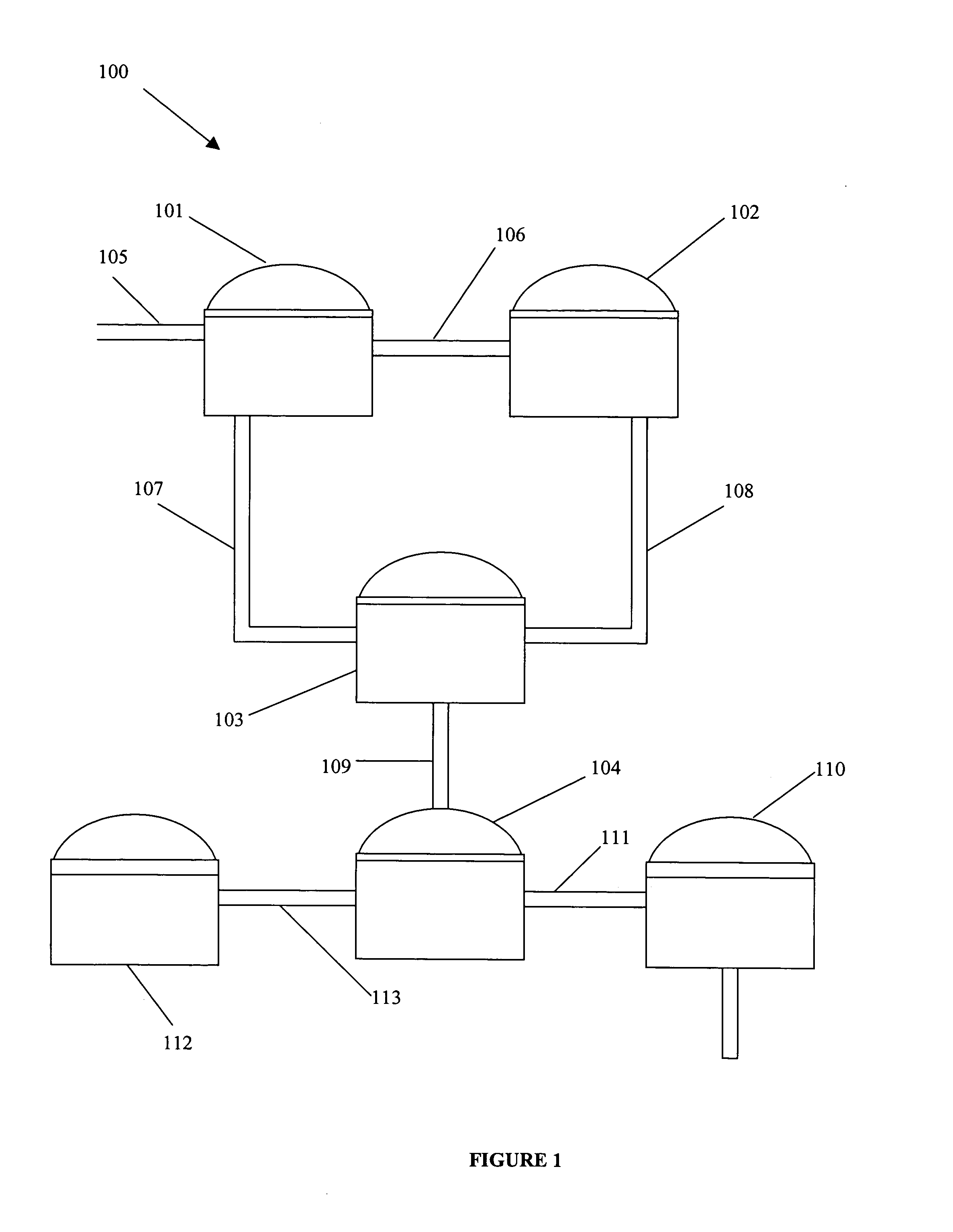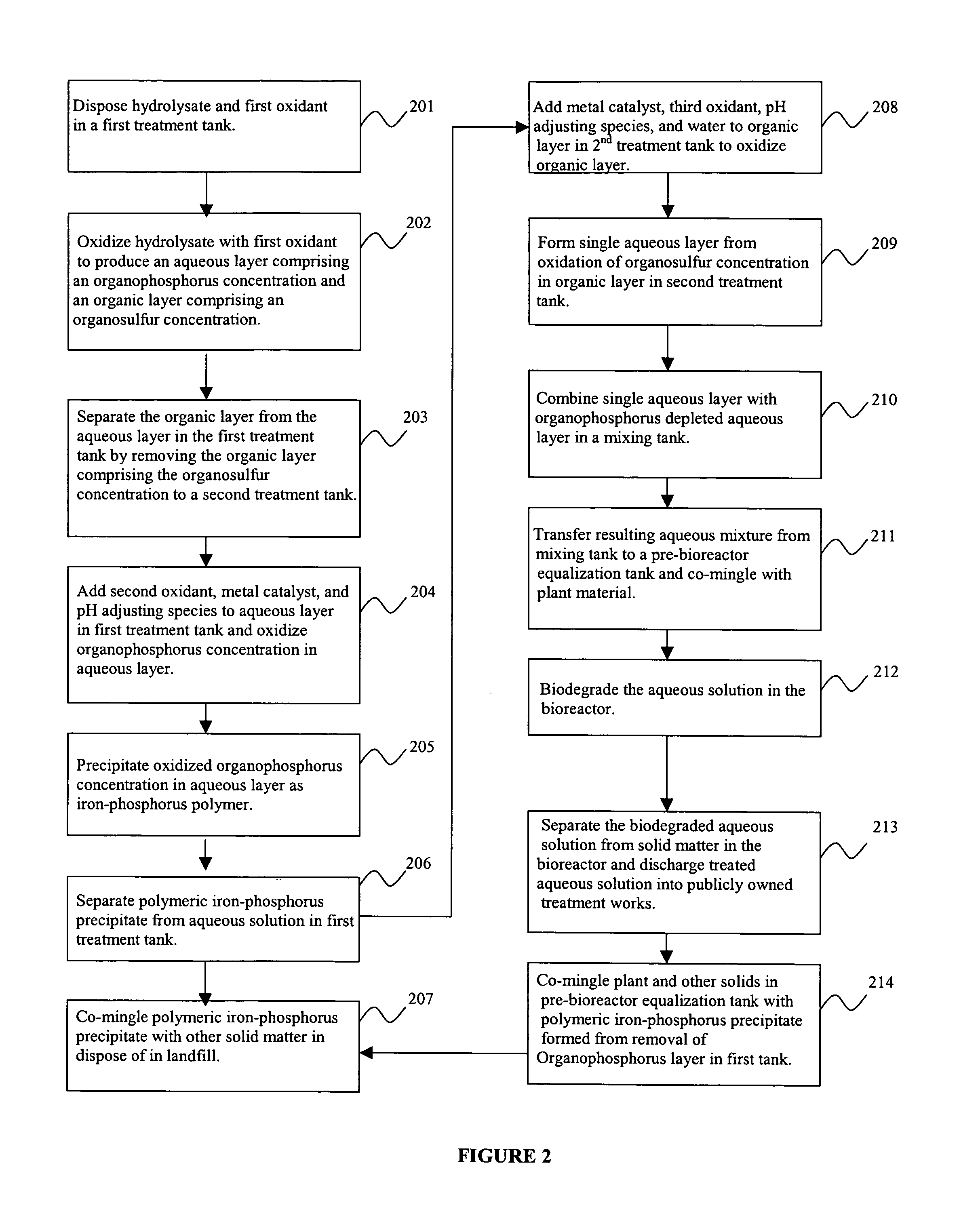Treatment of chemical agent hydrolysates
a chemical agent and hydrolysis technology, applied in the field of chemical weapon destruction methods, can solve the problems of hydrolysis of chemical agents, several significant problems, and inability to meet the needs of many state and local governments and communities near the site of stockpile sites
- Summary
- Abstract
- Description
- Claims
- Application Information
AI Technical Summary
Benefits of technology
Problems solved by technology
Method used
Image
Examples
example 1
[0062]About 3.8 liters (one gallon) of VX hydrolysate comprising 10% VX load [1 M thiolamine, 1 M phosphonates (EMPA and MPA)] and a pH of 14 is disposed in a first treatment tank or reaction vessel. The VX hydrolysate is stirred, and about 230 mL of 50% hydrogen peroxide (H2O2) is added to oxidize the VX hydrolysate in the first treatment tank. The oxidation of the VX hydrolysate produces an aqueous layer comprising an organophosphorus concentration and an organic layer comprising an organosulfur concentration. In the present example, the organic layer is not separated from the aqueous layer.
[0063]The pH of the oxidized hydrolysate solution is adjusted to a value of about 8 with the addition of about 270 mL of concentrated sulfuric acid. The hydrolysate solution is then subjected to a second oxidation. In the oxidation process, about 4 liters of 5-7% aqueous iron as FeSO4*7H2O is added to the solution. The pH of the hydrolysate solution is further adjusted to about 6 with concentra...
PUM
| Property | Measurement | Unit |
|---|---|---|
| molar ratio | aaaaa | aaaaa |
| molar ratio | aaaaa | aaaaa |
| molar ratio | aaaaa | aaaaa |
Abstract
Description
Claims
Application Information
 Login to View More
Login to View More - R&D
- Intellectual Property
- Life Sciences
- Materials
- Tech Scout
- Unparalleled Data Quality
- Higher Quality Content
- 60% Fewer Hallucinations
Browse by: Latest US Patents, China's latest patents, Technical Efficacy Thesaurus, Application Domain, Technology Topic, Popular Technical Reports.
© 2025 PatSnap. All rights reserved.Legal|Privacy policy|Modern Slavery Act Transparency Statement|Sitemap|About US| Contact US: help@patsnap.com



